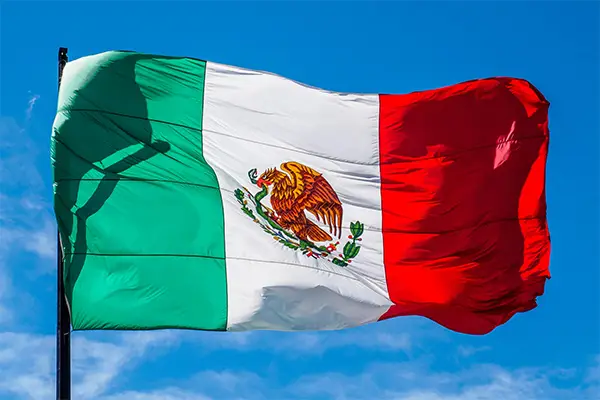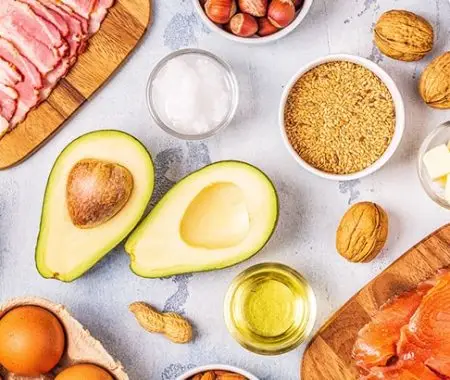Nutrient thresholds are limits for specific nutrients in foods and are considered important for health. Understanding these thresholds is vital for consumers as it can guide them toward healthier eating habits and encourage them to consume nutrients that will be good for them in the long run.
In March 2020, Mexico rolled out a set of updates to nutrition labeling regulations that align with the Official Mexican Standard (NOM) for food labeling. The phases, split into three parts, will be implemented until 2025, giving manufacturers more than enough time to implement these changes. Specifically, NOM-051 is about implementing transparent, easy-to-understand labels on packaged foods, including front-of-pack warning seals, and nutritional information. These regulations are ultimately designed to make customers more aware and promote healthier dietary choices. This article will outline these nutrient thresholds and how you can master these regulations for packages and products in the food and beverage industry.
TLDR
- Importance of Nutrient Thresholds: Nutrient thresholds are critical for guiding consumers towards healthier eating habits by highlighting acceptable levels of certain nutrients like sugars, sodium, and fats.
- Regulatory Updates: In March 2020, Mexico updated its nutrition labeling regulations under NOM-051 to include more transparent and understandable labels, including front-of-pack warning seals. These changes are phased until 2025 to allow manufacturers time to comply.
- Compliance Requirements: All businesses that manufacture, package, import, or plan to sell processed and prepackaged foods within Mexico must adhere to these regulations. Compliance helps avoid legal penalties and builds consumer trust.
- Nutrient Threshold Regulations: Under NOM-051, products that exceed certain nutrient limits must display front-of-package warning labels. This aims to improve consumer awareness and encourage healthier choices.
- Compliance Guide:
- Understanding Regulations: Businesses must be familiar with NOM-051, which mandates front-of-package warning symbols for foods high in sugars, sodium, and fats.
- Gathering Data: Companies should assess the nutritional content of their products through lab testing or verified nutritional databases.
- Implementing Changes: This involves reformulating products to reduce unhealthy nutrients, updating nutritional information, and adjusting labels to meet new standards.
- Technology for Compliance: Tools like Food Label Maker automate and simplify the creation of compliant labels, integrating changes in regulations to ensure up-to-date compliance.
Who Needs to Comply?
Any business that manufactures, packages, imports, or plans to sell processed and prepackaged foods within Mexico must comply with the Official Mexican Standard (NOM) and the regulations they have set. This also includes both domestic companies and international companies that want to enter into the Mexican food market or expand their business within the market.
These compliance standards are important for legal reasons, as businesses could face penalties and fines if they don’t comply with these updates, which further affect operations or profit. Adhering to the NOM guidelines also creates a sense of trust with your consumers as they are more aware of the nutrients in the ingredients they are consuming. This is a way to stand out in the market and become an industry leader in a society that is becoming more conscious about health and dietary preferences.
See How FoodLabelMaker Can Help You
Key Nutrient Thresholds Defined
The nutrient threshold regulations for food products in Mexico, particularly under the NOM-051 standard, are designed to combat high rates of obesity and other health issues by improving consumer awareness of the nutritional content of food products.
Food products that exceed the specified limits of key nutrients such as sugars, sodium, and fats need to have a front-of-package (FOP) warning label to show that these nutrients are in the product. The warning label is a black octagon with the words “Excesso” followed by the excess nutrient written in the shape. The warning statement also applies to excess amounts of sweeteners and caffeine, with advisories against consumption by children.

The implementation of these regulations has been split into three phases, with increasing regulations being introduced with each phase. This gives food manufacturers the time to change their recipes and reformulate their products to reduce levels of unhealthy nutrients and meet these changing standards. The goal is ultimately to promote healthier eating choices through clearer labeling and discourage buyers from purchasing products high in harmful nutrients, and thus potentially improving public health.
Step-by-Step Compliance Guide
Understanding the Regulations
The Official Mexican Standard (NOM) concerning nutrient thresholds, as we mentioned, is vital for any business who produces or distributes food in the Mexican market. The NOM-051 standard states that food and drinks containing high levels of sugars, sodium, and fats need to have front-of-package (FOP) warning symbols. This symbol aims to inform consumers of these high nutrient contents, curbing any negative health-related side effects.
Gathering the Necessary Data
To determine if your products meet the required standards, start by assessing the nutritional content of each product. You’ll need detailed information about the levels of sugars, fats, sodium, and other relevant nutrients. This often involves lab testing or using verified nutritional databases to get accurate data. It’s essential to gather this data for every ingredient and understand how they contribute to the final product’s nutrient levels.
Implementing Changes
Adjusting your food products to comply with nutrient thresholds involves careful planning and execution. Here’s a detailed guide on how to reformulate your products:
- Identify key nutrients: Check which nutrients or ingredients need reduction based on whether they exceed the NOM-051 thresholds.
- Research ingredient substitutes: Look for lower-sodium, lower-sugar, or lower-fat alternatives that can replace the ingredients that exceed the NOM-051 limits. For example, you could use a sweetener with a lower glycemic index instead of regular sugar.
- Prototype new formulations: Before rolling out an entirely new product line, rather create small batches of your reformulated product to test how the new ingredients might affect flavor, taste or texture.
- Conduct stability testing: It’s also important to make sure that the new formulation maintains its quality over its intended shelf life.
- Update nutritional information: Reflect any changes you’ve made on the nutrition facts label.
- Adjust warning labels: If the reformulation has successfully reduced nutrient levels below the thresholds, update or remove the front-of-pack warning labels.
- Ensure compliance: Double-check that all labeling is compliant with NOM-051 to avoid any legal issues.
- Get consumer feedback: If possible, conduct consumer testing to see if your customers are happy with the new version or if they have any complaints and feedback.
Using Technology for Compliance
Technology can play a crucial role in helping businesses meet regulatory requirements efficiently and accurately. Nutrition label makers, such as those provided by platforms like foodlabelmaker.com, are at the forefront of automating and simplifying the compliance process for food manufacturers, especially in adhering to stringent food labeling laws like Mexico’s NOM-051.
Nutrition label making software solutions automate the process of creating food label, saving time and increasing outputs. These tools also utilize database-driven systems which reduce human error and create ingredient lists that are accurate and precise. This is vital when it comes to measuring specific amounts and ingredients in food products and recipes.
As regulations change, nutrition label making software will automatically integrate these new changes as unlike manual processes, they are up-to-date with current regulations. They also help manufacturers avoid compliance penalties with their regular updates.
Companies like Food Label Maker also offer nutrition label software for producers and manufacturers in the industry. Their platform streamlines the label creation process and creates FDA-compliant nutrition facts labels for businesses in a variety of geographies, including Mexico. They offer:
- Customized nutrition labels: Users can make label templates that are pre-configured to comply with NOM-051, and customize font, ingredients and formats to suit their specific business needs.
- Easy to Use: Food Label Maker features a user-friendly interface that makes it easy to conduct analyses. Designed for simplicity, it allows even those with no prior experience to navigate the system effortlessly.
- Multi-Market Compliance: For businesses that might be operating in multiple countries, Food Label Maker can manage different regulations from one platform. This minimizes any errors or inconsistencies there might be if you want a compliant nutrition label in different markets.
Final Thoughts
Navigating Mexico’s updated NOM-051 food labeling standards is essential for any business involved in the food and beverage industry. Manufacturers and producers need to have a clear idea of the nutrient content of their products so that they can add front-of-package (FOP) warning labels accordingly, or reformulate their products to lessen ingredients that exceed NOM-051 nutrient threshold standards. These new standards emphasize the importance of clear and transparent labeling for consumers so that they are led towards healthier dietary choices.
Businesses can also use nutrition labeling software companies like Food Label Maker to help them create striking and compliant food labels and ingredient lists that follow the updated NOM-051 standards.



